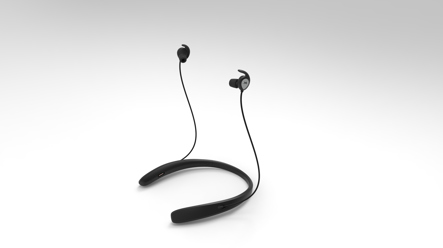Acoustic specialist Minuendo is calling for a dramatic change in the way companies monitor and respond to noise-induced hearing loss in the workplace. They claim that current practices are doing nothing to support employers, safety managers or employees in mitigating the risk of occupational hearing loss.
A recent report from the World Health Organisation highlights the scale of the problem: it estimates that 1.3 billion people globally suffer from hearing loss due to noise exposure – either through work or leisure activities. According to the HSE, some 14,000 people in the UK suffered damage to their hearing at work during 2021 alone – and this is likely to be a conservative estimate.
Current hearing conservation approaches are ineffective for workers in dynamic noise environments. Traditional PPE provides no information about the level of protection being offered or the level of exposure to damaging noise. Workers are therefore not able to change their habits to reduce personal risk.
That lack of refinement is problematic. Occupational noise-induced hearing loss (ONIHL) is the most common occupational disease in the world. Each case holds the potential to cause enormous individual suffering and distress, with associated health impacts such as early-onset dementia and cardiovascular disease. These health impacts also bring additional societal costs.
Many ONIHL cases can be attributed to poor adoption and usage of adequate PPE. Foam earplugs and earmuffs are cumbersome and uncomfortable and rely too much on the end-user to execute individual judgement around frequency and consistency of use.
These standard devices also provide little or no real-time information about the benefit being derived from their adoption. Users have no way of knowing what level of protection they receive or their level of exposure to damaging noise.
Safety managers, meanwhile, have little idea whether PPE is being worn consistently or correctly, especially with highly mobile end-users often working out of sight in dynamic noise environments. This lack of clarity and insight can result in compliance failures, and that in turn runs the risk of future occupational noise-induced hearing loss claims.
Neal Muggleton, Chief Operating Officer at Minuendo, says: “Current occupational hearing loss processes are a failure. They represent a massive time and cost burden, but despite all the training, monitoring and information-gathering there is no visibility of how PPE is performing in the field, who is wearing it properly or who is being over-exposed – until it is too late. We need to cut through the noise and find a solution that works for everyone involved.”
Minuendo believes that technology transfer from the music industry, combined with Cloud storage and smart data processing, is the way forward. The company’s reputation is based on helping musicians to cancel out extraneous noise and focus on the sounds they need to hear. Minuendo is confident that the same technology can be applied in other industries to dramatically reduce occupational hearing loss.
Their solution is called Smart Alert, a system designed to automate and integrate the process of noise monitoring and encourage better noise-related behaviour. Smart Alert basically consists of a set of acoustically designed earplugs attached to a smart collar, and a docking station that charges the earplugs and downloads the data they collect. That data is then stored on the Cloud, where it can be interrogated.

Results can be delivered as automatic exposure notifications to individuals via SMS text or email, or presented in Dashboards to make it relevant and accessible for safety managers so they can see where intervention is required.
Smart Alert offers the employer a reliable and continuous record of the noise exposure for every single employee, so that occupational risk can be distinguished from other sources of noise. It improves the life of the safety manager, who can now easily identify where interventions are required. Most importantly, it improves the life of the employee by warning them at the point of danger and giving them access to the information they need to keep themselves safe.
Minuendo overcomes these problems by automating the hearing loss prevention process, providing practical real-time guidance on noise exposure that helps adopt safer behaviour in industrial and construction environments.
The solution’s foundation are smart alert earplugs, which continuously monitor noise levels, providing alerts when unsafe noise levels are encountered. Other usage data, such as when and how well the earplugs have been fitted, is also presented. The earplugs feature an acoustic filter, initially developed for professional musicians, that does not impair situational awareness.
Data recorded over the course of a day is then transferred to Minuendo’s secure cloud platform, where it is analysed, and actionable insight is created. End-users receive practical suggestions and advice on how to improve personal safety and lower the risk of noise-induced hearing loss. It is about empowering end-users to change their safety behaviour.
Automating the process means the safety manager receives digestible data on the adoption and use of hearing protection and only needs to intervene when alerted. Most modern factories or construction sites contain numerous sensors from which there is a risk of information overload. With the Minuendo solution, notifications can be set at specific levels to reduce the level of unwanted email or SMS, so that safety managers can focus their limited resources on the highest priorities.
Easy access to reliable data helps safety managers build necessary reports in a timelier manner and achieve KPIs. Moreover, historical data can inform investigations into whether noise-related hearing loss has been suffered in an occupational or recreational setting.
Neal Muggleton concludes: “The ability to access meaningful data and act upon it is the future of hearing loss prevention.”











